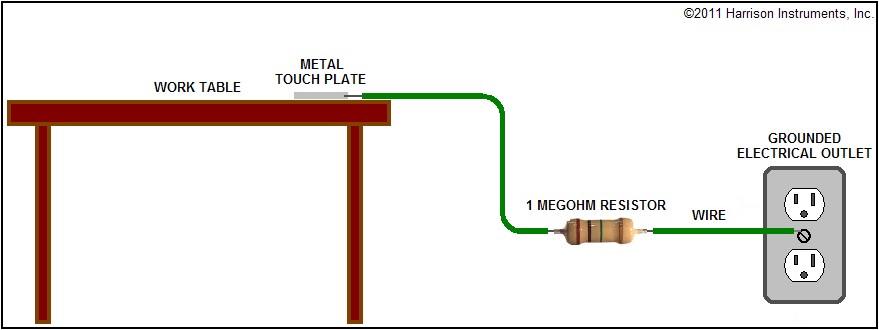
Component Handling Precautions
(Back to Assembly
Instructions)
Electronic components such as small diodes and CMOS ICs need careful handling, but beginners may not know what situations may cause damage, and what precautions to take. You should take reasonable care in handling all components, but certain components can be damaged by high voltage static charges. It is easy for static charges to accumulate on your body without evidence of their presence, because they are generated by friction between insulating materials such as many plastics, fabrics, and other common materials. For instance, if you walk across a carpet to your work place, you can accumulate a static charge of several hundred volts. Voltage is destructive to electronic devices.
CMOS devices such as the ICs used in the Minimum Theremin kit can be damaged by voltages as low as 250 volts, so the first precaution is to ensure that you have not accumulated a static charge. A person handling such devices in the course of their daily work may have a grounded mat on their benchtop and a grounded wrist strap. However, the occasional kit builder does not have to go to such extents to ensure that static charges on their body are dissipated. Such charges can be dissipated by touching the metal casing of grounded equipment at your work place (e.g., a piece of test equipment). If you do not have such equipment available, then you can run a wire from the cover screw of a nearby electrical outlet and connect it through a 1 megohm resistor to a small metal plate attached to your work surface. This arrangement is illustrated in the figure below.
IMPORTANT: To prevent the possibility of lethal electrical shock, the connection to the outlet ground should be performed by an electrician or other qualified individual.

The two CMOS ICs in the Minimum Theremin Kit are supplied in protective
carbon-filled foam that "shunts" static charges to prevent them from flowing
between the ICs pins. An antistatic plastic bag, distinguished by its
pink color, is used for the voltage regulator. The
correct procedure for handling these sensitive parts is to:
1. Touch your grounded equipment or grounded plate.
2. Remove the device from its protective foam or bag.
3. Solder the device to the printed circuit board.
To prevent static charges from accumulating on your body, it is best to perform these steps without leaving your work place. If you do leave your workplace between steps, touch your grounded equipment or grounded plate immediately before touching any of the individual parts or the printed circuit board. Once the assembly is complete, the electrical interconnections on the printed circuit board provide an increased degree of protection from static electric charges, however, it is still recommended that you discharge any static charges on your body before you touch the completed assembly.
Always make sure that a part is inserted in the correct orientation before you solder it in place.